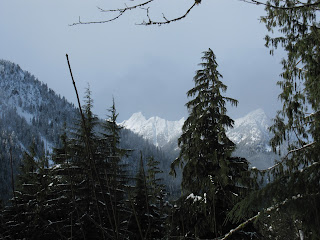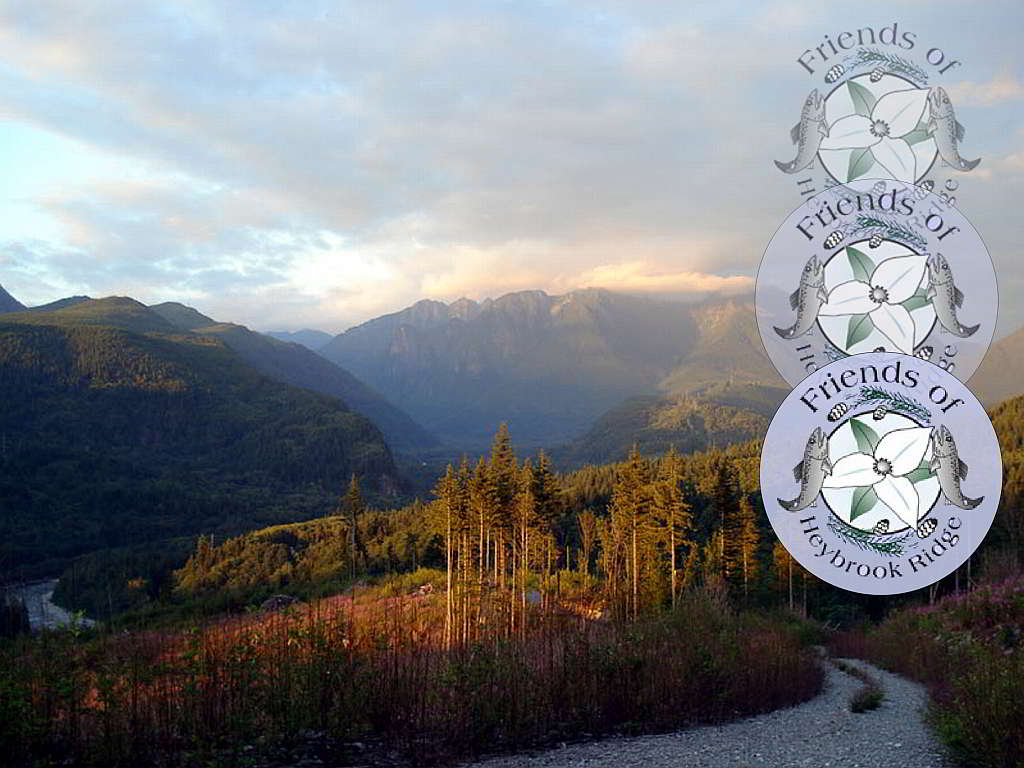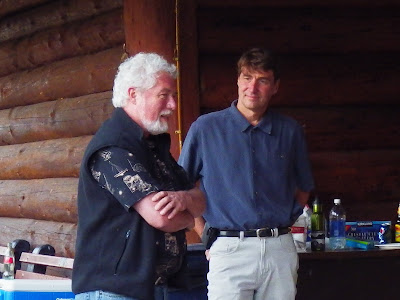Action needed to protect Glacier Peak Wilderness, stop "Lookout" bill
We need your help to stave off a bill in Congress (H.R. 6039) that would set
a terrible precedent for the National Wilderness Preservation System and set
the Glacier Peak "Lookout" table for the House Republicans to
launch an across-the-board attack on Wilderness protection. H.R. 6039 would
perpetuate the recently, illegally constructed Green Mountain Lookout in the
Glacier Peak Wilderness by overriding a recent court ruling ordering the
structure's removal.
Background. In 2009, with no public notice or environmental review, the
U.S. Forest Service (FS) began illegally constructing a "fire lookout"
building on Green Mountain after having removed the remains of the former
lookout seven years earlier. The FS used more than 65 helicopter flights,
power tools and jack-hammers, new massive concrete footings, and all new
wood for the foundation, wall studs, rafters, floor joists, and more.
Construction of a new building, use of helicopters and power tools, and lack
of environmental review all violated the Wilderness Act and the National
Environmental Policy Act.
When Wilderness Watch learned that the new "lookout" was under construction
we tried to halt the project. We appealed to the district ranger, forest
supervisor, regional forester, and the Chief's office in Washington, D.C. At
each level our attempts to get the law enforced were ignored and the agency
pushed ahead on the flimsy rationale of local support for the wilderness
construction project. With no other remedy, we went to federal court. In
March, Judge John Coughenour in Seattle ruled in our favor. Noting the FS
"egregiously erred" in its actions, the judge ordered the agency to remove
the new building from the Glacier Peak Wilderness. You can read more on our
website:
www.wildernesswatch.org/issues/index.html#Lookout
The Larsen Bill. In late June, responding to pressure from a small, vocal
group, U.S. Rep. Rick Larsen, who represents the Darrington area in
Congress, introduced H.R. 6039 to amend the 1984 Washington State Wilderness
Act to authorize the Green Mountain Lookout and effectively overturn the
court's ruling. So far, the bill has not received a hearing and we are
actively working to forestall any companion bill in the Senate.
Rep. Larsen generally supports Wilderness, yet this bill would be a damaging
blow to the Glacier Peak Wilderness and the entire National Wilderness
Preservation System. If enacted into law it would allow the illegally
constructed building to remain in designated Wilderness, where buildings and
structures are banned. The bill would reward Forest Service officials who
deliberately violated laws intended to protect Wilderness and allow for
public participation in public lands' management. And Rep. Larsen's bill
would set a damaging national precedent for exempting unlawful uses in
existing Wilderness. Today, with the most anti-wilderness U.S. House since
1964, wilderness opponents would love to set this precedent by passing
Larsen's bill. For more information, see the excellent commentary that
appeared recently in the Everett Herald:
http://www.heraldnet.com/article/20120722/OPINION03/707229964/-1/OPINION#Bil
l-to-protect-lookout-would-chip-away-at-wilderness-protection
WHAT YOU CAN DO. Please contact Senators Maria Cantwell (D-WA) and Patty
Murray (D-WA) urging them to protect the Glacier Peak Wilderness and the
Wilderness system by not supporting or pursuing Green Mountain Lookout
legislation. Their contact information is below. Also, please send a letter
to Representative Larsen, even if you don't live in his Congressional
District, urging him to withdraw his bill. If you live in Rep. Larsen's
district you can email him at the address below. Otherwise, to reach him
you'll need to send your letter via U.S. Mail. Write in your own words, but
consider including the following points:
1. H.R. 6039 would set a terrible national precedent that could open the
door for other bad bills authorizing illegal uses or structures elsewhere in
the National Wilderness Preservation System.
2. H.R. 6039 would degrade the wilderness character of the Glacier Peak
Wilderness with this building highly visible atop a wilderness peak.
3. H.R. 6039 would overturn a well-reasoned ruling from U.S. District Court
and reward officials who knowingly broke the law.
4. The delegation should support a plan to move the new lookout to a
location in nearby Darrington or to a non-wilderness summit where it can be
accessible to many more citizens. This has been done at the popular Columbia
Breaks Fire Interpretive Center near Entiat, WA .
5. Glacier Peak Wilderness is a national treasure belonging to all citizens
across the country. It deserves the strongest possible protection for
current and future generations.
Senator Maria Cantwell Senator Patty
Murray
915 Second Avenue, Suite 3205 915 Second Avenue, Suite
2988
Seattle, WA 98174 Seattle, WA
98174
206-220-6400 - phone 206-553-5545 - phone
206-220-6404 - fax 206-553-0891 - fax
Email at:
http://www.cantwell.senate.gov/public/index.cfm/email-maria
Email at:
http://www.murray.senate.gov/public/index.cfm/contactme
Representative Rick Larsen
2930 Wetmore Avenue, Suite 9F
Everett, WA 98201
425-252-3188 - phone
425-252-6606 - fax
Email at:
https://larsen.house.gov/contact/email-me.shtml
____
If you can make a financial contribution to help in this effort, please do
so by visiting our website. Contributions from
wilderness advocates like you make our work possible. Thank you.
Wilderness Watch is the only national conservation organization dedicated
solely to the protection and proper stewardship of lands and rivers included
in the National Wilderness Preservation System and National Wild & Scenic
Rivers System.
CONTACT
dserra@wildernesswatch.org
Wilderness Watch
PO Box 9175
Missoula, Montana 59807
US






































